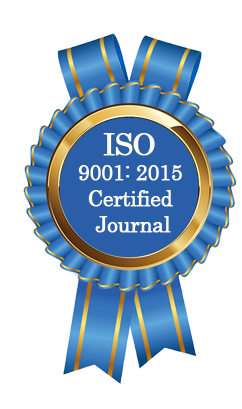| All | Since 2020 | |
| Citation | 105 | 60 |
| h-index | 4 | 4 |
| i10-index | 3 | 2 |
WJAHR Citation 
Login
News & Updation
Best Article Awards
World Journal of Advance Healthcare Research (WJAHR) is giving Best Article Award in every Issue for Best Article and Issue Certificate of Appreciation to the Authors to promote research activity of scholar.
Best Article of current issue
Download Article : Click here
Indexing
Abstract
OXYGEN SATURATION AT ADMISSION – PREDICTION OF FETO - MATERNAL OUTCOME AMONG PRE-ECLAMPSIA MOTHERS
*Dr. N. Muthulakshmi and Dr. Vanitha
ABSTRACT
Introduction: Pre-eclampsia is an pregnancy complication affecting 10% of pregnant mothers. It affects both maternal and fetal outcome adversely. In preeclampsia, hypoxemia may result from a number of mechanisms. Preeclampsia remains a complex and poorly understood disease. Currently, there are no reliable predictor of preeclampsia for early diagnosis to avoid adverse maternal or perinatal outcomes. Objective: To evaluate the incremental value of SPO2 in prediction of maternal and fetal outcome in women with preeclampsia. Methodology: We conducted the cross-sectional study on 50 pre eclamptic women who were hypertensive after 20 weeks of gestation with proteinuria with variable severity, were selected on admission at labor ward of OBG department of Tirunelveli medical college hospital. Results: After statistical analysis, it was seen that the women having SPO2 ? 95% was 18 and with normal SPO2 was 32 mothers. The mean age of low and normal group was 30.3 and 26.8 years. The mean gestational age of two groups was 34.6 and 35.8 weeks respectively. The Systolic BP was 161.7 and 145.3 in both groups and Diastolic BP was 103.9 and 95.9 mmHg respectively, the difference was statistically significant in both groups. There was proteinuria in 55.6% in low spo2 group and 43.6% in normal spo2 group. MGSO4 administration was required in 83.3% in low SPO2 group and 12.5 in normal SPO2 group. LSCS was bit higher in low SPO 2 group. Thrombocytopenia, blood transfusion, parenteral antihypertensives and acute renal dysfunction was more in low SPO2 group. Whereas the incidence of cortical blindness, pulmonary edema, hepatic dysfunction, placental abruption and PPH was not statistically significant. The fetal outcome like IUD, Birth asphyxia, neonatal death, MAS and NICU admission between two groups was not statistically significant. Conclusion: In mothers SpO2 ? 95% had more adverse outcomes in comparison to SpO2 ?96% along with systemic dysfunction.
[Full Text Article] [Download Certificate]
